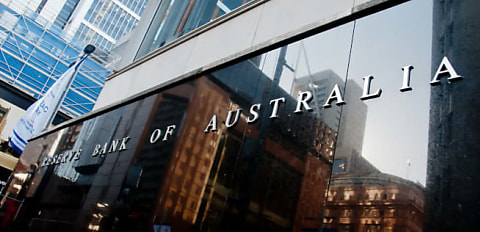The Reserve Bank of Australia (RBA) has made its tenth consecutive cash rate hike, raising the official cash rate by 25 basis points (bps) to 3.60 per cent from 3.35 per cent.
The decision to raise the cash rate does not come as a surprise, as the major banks predicted a 25-bp rise after adjusting their terminal cash rate forecasts from 3.85 per cent to 4.1 per cent.
RBA governor Phillip Lowe said in a monetary policy decision statement that the board expects that “further tightening of monetary policy” will be necessary to ensure that inflation returns to target and that the current period of high inflation “is only temporary”.
“In assessing when and how much further interest rates need to increase, the Board will be paying close attention to developments in the global economy, trends in household spending and the outlook for inflation and the labour market.
“The Board is seeking to return inflation to the 2 to 3 per cent target range while keeping the economy on an even keel, but the path to achieving a soft landing remains a narrow one,” Mr Lowe said.
AMP head of investment strategy and chief economist Shane Oliver said the RBA has "done enough" and should now pause or risk "plunging the economy into a recession".
"Inflation is still too high and the jobs market remains very tight, but inflation and the jobs market are invariably the last indicators to turn down in an economic downturn.
"In particular, we are concerned that the RBA overreacted to the December quarter CPI. Letting inflation and jobs data dominate in driving monetary policy is like driving a car using the rear-view mirror," Mr Oliver stated.
CoreLogic research director Tim Lawless stated this rate-tightening cycle has been “both the largest and most rapid on record by some margin”.
“The cash rate setting is now 105 basis points above the pre-COVID decade average (2.55 per cent) and today’s hike adds roughly $160 per month to repayments on a $500,000 variable rate owner-occupier mortgage.
“Since the rate hiking cycle commenced in May, mortgage repayments on a $500,000 home loan have increased by just over $1,000 per month for owner-occupiers,” Mr Lawless added.
CreditorWatch chief economist Anneke Thompson commented on the RBA’s decision: “Despite clear signs that the brakes are being slammed on the Australian economy, the RBA once again chose to increase the cash rate target.
“This latest increase will take many borrowers — both personal and business — well past their lenders’ serviceability test [currently 3 per cent over product rate] and will be a serious drag on both consumer and business sentiment,” Ms Thompson said.
HIA chief economist Tim Reardon said the full impact of the last nine months of rate increases will continue to compound the decline in building activity as lending indicators for housing activity fall to the lowest levels in 15 years.
“Loans for the purchase and construction of a new home fell in January to the weakest month since November 2008. This is before the full impact of rate increases in 2022 hits the market, let alone the February 2023 increase.
“By continuing to raise rates, the RBA will inflict further unnecessary pain on the $120 billion housing sector and related industries,” Mr Reardon stated.
PropTrack senior economist Eleanor Creagh flagged that the move to hike came despite “some easing” last month, and even though labour market conditions “remain tight, with the unemployment rate close to a multi-decade low”.
“The RBA’s recent minutes confirmed its determination to bring down inflation and avert a wage-price spiral,” she continued.
“Now the cash rate is sitting at 3.60 per cent after 350 basis points of tightening to date, maximum borrowing capacities have dropped by around 30 per cent.
“The significant reduction in borrowing capacities implies further price falls,” Ms Creagh added.
Westpac chief economist Bill Evans noted the change of words used by the governor and said the "real issue was the guidance" he would provide for the future.
"There is some clear evidence in the governor’s statement that a pause can be expected in April but the big picture for inflation has not improved sufficiently to justify that call."
"We continue to expect rate increases in both April and May," Mr Evans stated.
The lead-up to the March decision
The March rate forecasts were adjusted recently following Mr Lowe’s statement during last month’s minutes, where he notably changed the wording from the December statement.
While the governor stated in December that “the board expects to increase rates further over the period ahead, but it is not on a pre-set course”, he changed it in February to “the board expects that further increases in interest rates will be needed over the months ahead”.
Additionally, it was revealed that the central bank had not considered a pause for the 7 February cash rate decision.
Influences stemming from wages, unemployment, services demand, supply chain issues and 33-year record high inflation informed this decision. Due to this, the RBA board agreed that “a further increase in interest rates was warranted”.
The RBA began upping the cash rate last May, where it rose by 25 bps before commencing with four consecutive 50-bp rises during June, July, August and September. The rate hikes returned to 25 bps in October, November, December, and February.
[RELATED: Big 4 forecast 25-bp rise in March]

